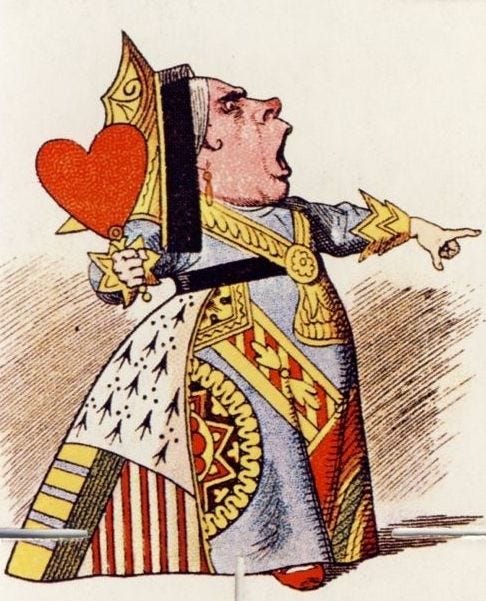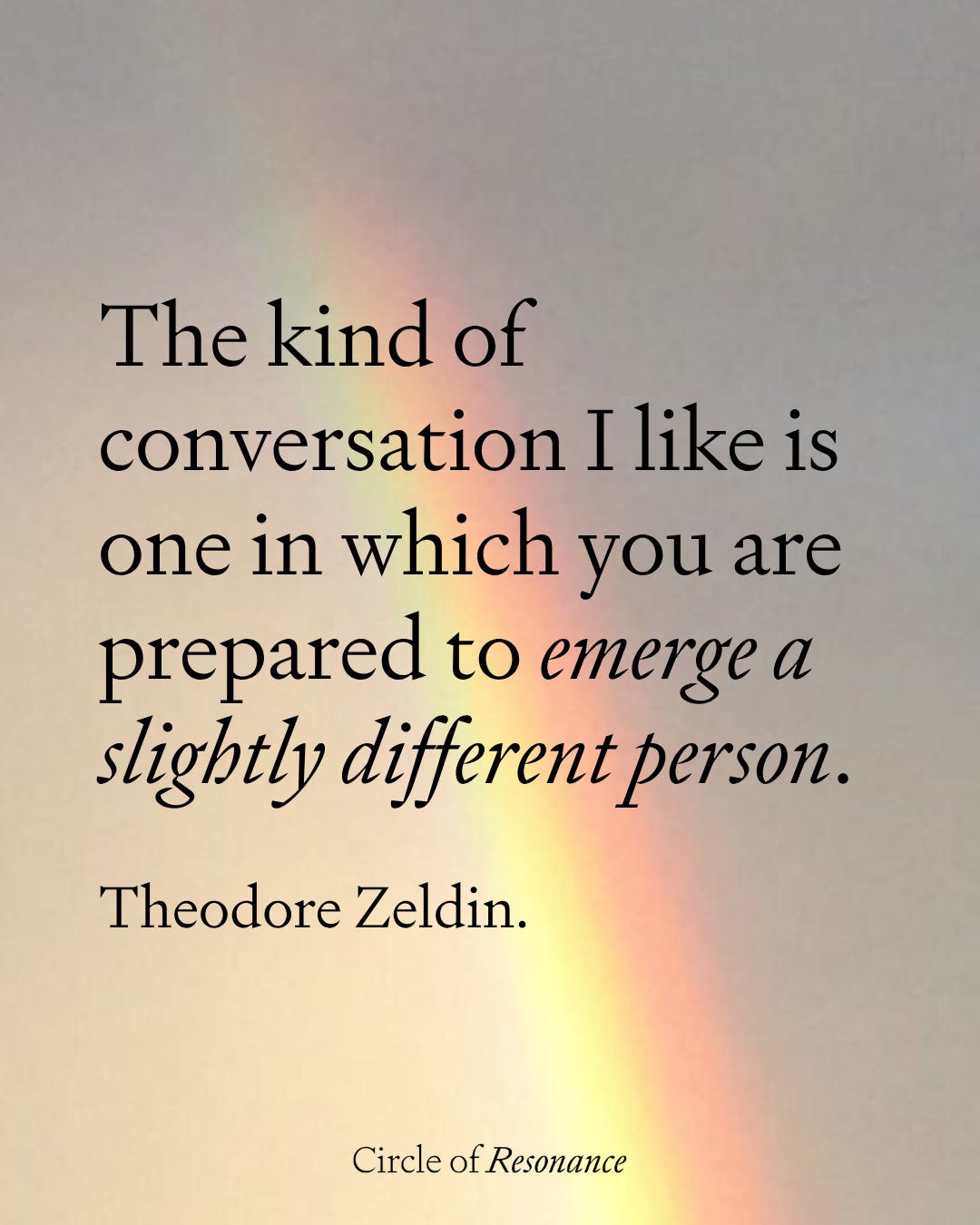When "More" Does No Longer Resonate
The paradox of modern success and the search for what truly ignites us
It was 2020, and I was in yet another meeting without agenda or intention – another meeting on "alignment," though I wasn't sure what we were aligning on. During hectic months of managing change processes, we were caught in back-to-back meetings with little visible impact or outcome.
I watched faces on Zoom screens, all of us going through the motions while our energy drained away. We discussed audience targets, tracked metrics, and launched new initiatives. On paper, we were thriving. The pandemic had brought back long-lost audiences, at least for the moment. But beneath the surface, I felt a hollow restlessness as if I were sleepwalking through someone else's life. I was bored out.
The irony wasn't lost on me. I had chosen art school when everyone said it was financial suicide, believing in creativity over practicality. Yet here I was, having "made it" to a top management position in a renowned media house, feeling more disconnected from what made me come alive than ever before. I was missing what I had learned as a designer: the joy of creating, collaborating, and bringing ideas to life through genuine creative partnerships.
The Acceleration Trap
Around that time, I came across the work of German sociologist Hartmut Rosa. His theory of resonance1 offered a completely different perspective. It helped me understand what I was going through, and what millions of others are experiencing in the strange and exhausting trap of modern life:
Jason Fried, CEO of Basecamp, describes modern workplaces where being "crazy at work2" has become normal. The workday is broken into tiny, distracted fragments, constantly interrupted by meetings, messages, and noise. At the same time, an obsession with growth drives unrealistic expectations. As a result, people can no longer do meaningful work during working hours. Life becomes little more than what remains after work has taken the best of our energy and attention.
Elly Oldenbourg points to a similar problem. She notes how busyness, often mindless and frantic, has become a badge of honor. This constant rush, filled with endless conversations and nonstop data production, creates the appearance of productivity while often reducing real results3.
Both authors are clear: running on empty isn’t a badge of honor. It’s a costly mistake. This systemic issue carries consequences not only for individuals, but for society and the environment as a whole.
Hartmut Rosa offers a compelling perspective on this phenomenon. He argues that modern systems depend what he calls dynamic stabilization. They must keep growing, innovating faster, and accelerating constantly in order to survive. This leads to what he describes as a frenetic standstill. We are always in motion but stuck in place. Like the Red Queen in Alice in Wonderland, we are running as fast as we can just to stay where we are.
The impact is not just physical or mental. This constant acceleration is changing the way we relate to the world around us.

When the World Goes Mute
Over the years, I slowly but steadily witnessed at work what Rosa identifies as a fundamental problem: the breakdown of our relationship with the world itself. Rosa calls this "alienation" – experiencing a world that has become unresponsive, where there's an absence of meaningful connection between people and their work, colleagues, and even their own actions. Interactions become functional, projects reduced to "deliverables," creativity commodified as "innovation capacity."
My colleagues never became just networking opportunities, thankfully, but I found myself craving conscious connections, which I discovered on my yoga mat, through further education and travel alongside my work commitments. Yet, I didn't want my real life to happen only on weekends and holidays. Work should be an opportunity to thrive and feel alive, but it wasn't back then.
The Resonance Alternative
Rosa's work offers more than diagnosis. It points us toward a different way of being. He calls it "resonance" – not just the casual "that resonates with me," but a specific mode of relating where we and the world mutually affect and transform each other.
Rosa identifies four core qualities of genuine resonance:
Bidirectionality (Mutual Transformation): Both being "touched" by the world (af←fect) and actively "touching" back (e→motion). This often manifests physically – shivers, changes in posture, that feeling when something truly "clicks."
Distinct Voices (Authenticity and Individuality): Both parties must "speak with their own voice," not merely echo each other. True resonance requires unique, independent contributions.
Strong Evaluations (Meaningfulness): Encounters with something we perceive as an independent source of value – vital in itself, not just because it serves our goals.
Constitutive Inaccessibility (Emergence): Resonance cannot be manipulated or controlled. There's always the possibility the other won't respond. Attempts to control resonance often destroy it.
When I reflected on my life through this lens, everything clicked. The moments I felt most alive were about genuine encounters: conversations where both people changed and creative projects that took on a life of their own
Beyond the Cage
The paradox of modern success is that the very systems designed to give us more – more opportunities and more choices – often leave us feeling less alive. Rosa's insight reveals why: when acceleration becomes our primary mode of relating to the world, we lose access to the responsive relationships that actually sustain us.
This doesn't mean rejecting progress but recognising that the endless pursuit of "more" creates its own form of imprisonment. Our golden cages are built from acceleration that turns everything – including our creativity, relationships, and sense of purpose – into "resources" to be optimised.
The search for what truly ignites us requires a fundamental shift from accumulation to resonance, from control to responsiveness, from treating the world as mute to allowing it to speak with its own voice.
Breaking the Pattern
Start by noticing when you're caught in acceleration mode:
Track your energy throughout each day. When do you feel genuinely engaging versus just consuming or producing?
Each evening, reflect: What moved me today? When did I feel I was genuinely influencing someone or something? What spoke to me with its own voice?
The Invitation
Rosa's work suggests this isn't just about personal fulfilment – it's about recognising that our culture's obsession with acceleration is creating widespread alienation. As more people recognise the limitations of the endless acceleration model and begin prioritising resonant relationships, we create ripple effects that can transform how we work, lead, and live together.
This is the first article in a series exploring how we can move from alienation to resonance. Next week, we'll explore the three types of resonance and how to recognise them in your own experience.
If you're feeling called to explore your journey from acceleration to resonance more deeply, I'm offering one-on-one coaching sessions this summer. And if you're ready to go further, consider joining my next CoR Thrive cohort beginning in September.
The shift from the golden cage to true aliveness is often easier with a companion who knows the terrain.
I'm here if you'd like to connect.
Warmly,
Graziella
Rosa, H. (2019). Resonance: A sociology of our relationship to the world. Polity Press.
Fried, J., & Hansson, D. H. (2018). It Doesn't Have to Be Crazy at Work. HarperBusiness
Oldenbourg, E. (2024) Workshift: Warum wir heute anders arbeiten müssen, um unser Morgen zu retten. Weinheim: Campus Verlag. ISBN 978‑3‑593‑51823‑7.






